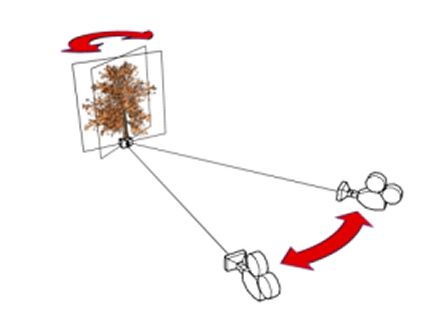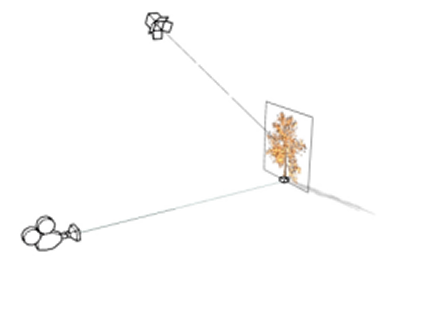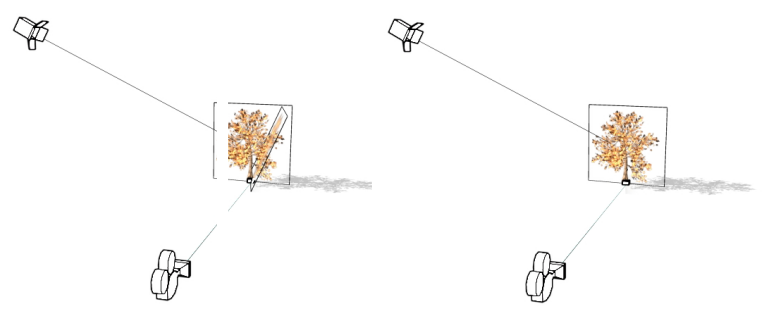In this tutorial, you learn how to use particles behaving as “billboards”: Each particle shows a bitmap tree image that can render quickly, while a twinned particle casts the shadow of the tree.

Trees modeled using conventional 3D techniques can produce authentic results, but a single tree typically can include 20,000 polygon faces or more. If you need to duplicate the tree many times, to create a forest for example, you can be faced with a lengthy render involving millions of polygons.
However, there is a way to populate your scene with many life-like trees without sacrificing render speed. You can do this by using a particle system to generate a number of particles in the shape of two-dimensional planes, or “billboards.” A map of a tree is then projected onto each billboard.
This particle method permits the mapping of different sizes and shapes of trees and is very economical to render. But it also raises several important issues.
Because the tree image is two-dimensional, it can be seen properly only when it directly faces the camera. If seen from an angle, it loses its realism.

Left: Particle tree facing camera
Right: Particle tree at oblique camera angle
For this reason, the flat plane on which the image is mapped must be continuously re-oriented toward the camera as the camera moves around the scene.

Particle tree continuously faces the camera
Another consideration is how your two-dimensional particle trees cast shadows. If the light source (usually the sun) does not directly face the billboard plane, the tree will cast an unrealistic oblique shadow, as shown in the next illustration.

Light source causes the particle tree to cast a shadow at an oblique angle
Therefore, you must generate a second set of particle tree planes. The first set should show the tree and no shadow, while the second set should show a shadow and no tree.

Left: Second particle tree oriented toward the light source, with its shadow visible
Right: Second particle tree hidden, with only its shadow visible
The visible tree planes are oriented to continually face the camera, while the shadow-only tree planes continually face the light source. You define the tree and shadow orientation in the particle system parameter settings.
You should also introduce a degree of self illumination to the particle-based trees you generate. Otherwise, if the light source is behind the object in camera view, as shown in the next illustration, the object can appear darker that it should.

Left: Camera view of backlit particle tree with no self-illumination
Right: Camera view of particle tree illuminated directly by light source
In this tutorial, you will learn how to:
 (Project Folder) and set
your current project to Autodesk 3ds Max 2011 Tutorials.
(Project Folder) and set
your current project to Autodesk 3ds Max 2011 Tutorials.